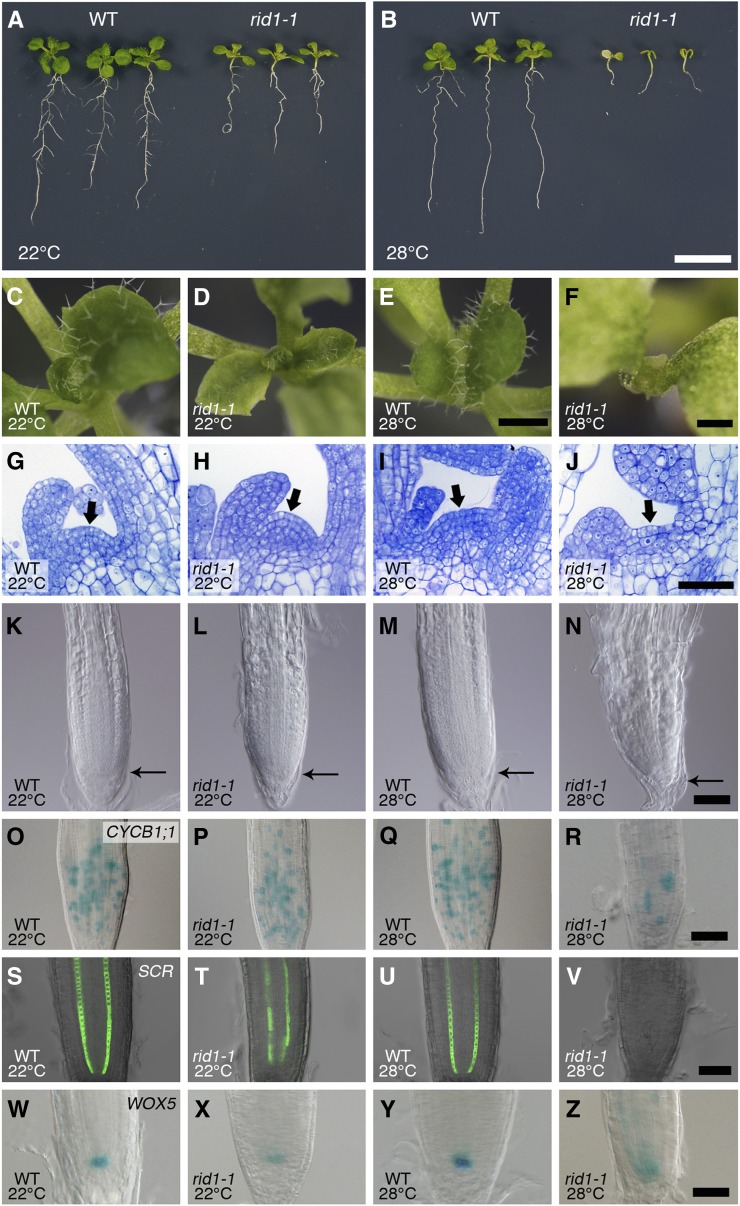Figure 2.
Effects of the rid1-1 Mutation on the Apical Meristems of Seedlings.
(A) and (B) Twelve-day-old seedlings of the wild type (WT) and rid1-1 grown at 22°C (A) or 28°C (B). Bar = 1 cm.
(C) to (Z) Seedlings of the wild type ([C], [E], [G], [I], [K], [M], [O], [Q], [S], [U], [W], and [Y]) and the rid1-1 mutant ([D], [F], [H], [J], [L], [N], [P], [R], [T], [V], [X], and [Z]) were germinated and grown for 12 d at 22°C ([C], [D], [G], [H], [K], [L], [O], [P], [S], [T], [W], and [X]) or 28°C ([E], [F], [I], [J], [M], [N], [Q], [R], [U], [V], [Y], and [Z]).
(C) to (F) Top views of seedlings. Bars = 1 mm for (C) to (E) and 0.5 mm for (F).
(G) to (J) Longitudinal sections of the shoot apex. Resin-embedded tissues were sectioned and stained with toluidine blue O. The arrows indicate the SAM region. Bar = 50 µm.
(K) to (N) Differential interference contrast images of the root apical region. The distal end of the RAM is indicated by a thin arrow. Bar = 50 µm.
(O) to (R) Expression of CYCB1;1:GUS in the RAM. Bar = 50 µm.
(S) to (V) Expression of SCR:GFP in the RAM. Bar = 50 µm.
(W) to (Z) Expression of WOX5:GUS in the RAM. Bar = 50 µm.

